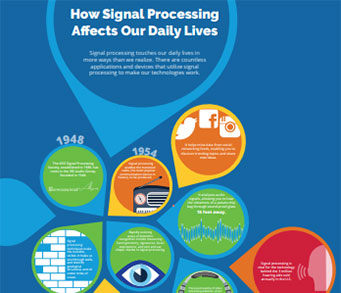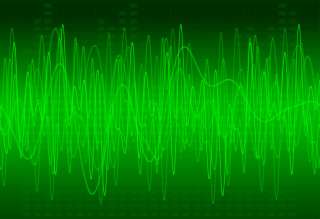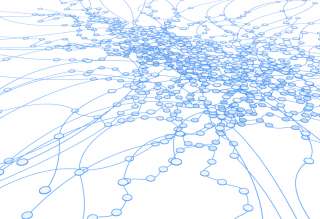SPS Feed
Top Reasons to Join SPS Today!
1. IEEE Signal Processing Magazine
2. Signal Processing Digital Library*
3. Inside Signal Processing Newsletter
4. SPS Resource Center
5. Career advancement & recognition
6. Discounts on conferences and publications
7. Professional networking
8. Communities for students, young professionals, and women
9. Volunteer opportunities
10. Coming soon! PDH/CEU credits
Click here to learn more.
The Latest News, Articles, and Events in Signal Processing

The candidate is expected to contribute to cutting edge research in Artificial Intelligence and Machine Learning applications.
It is well known that the convergence of Gaussian belief propagation (BP) is not guaranteed in loopy graphs. The classical convergence conditions, including diagonal dominance, walk-summability, and convex decomposition, are derived under pairwise factorizations of the joint Gaussian distribution. However, many applications run Gaussian BP under high-order factorizations, making the classical results not applicable.
Spike estimation from calcium (Ca
This paper introduces a node-asynchronous communication protocol in which an agent in a network wakes up randomly and independently, collects states of its neighbors, updates its own state, and then broadcasts back to its neighbors. This protocol differs from consensus algorithms and it allows distributed computation of an arbitrary eigenvector of the network, in which communication between agents is allowed to be directed.
In this paper, we study the problem of recovering a group sparse vector from a small number of linear measurements. In the past, the common approach has been to use various “group sparsity-inducing” norms such as the Group LASSO norm for this purpose. By using the theory of convex relaxations, we show that it is also possible to use 1 -norm minimization for group sparse recovery.
Lecture Date: June 2, 2019
Chapter: Toronto
Chapter Chair: Mehnaz Shokrollahi
Topic: Hyperspectral Unmixing: Insights and Beyond
Lecture Date: May 31, 2019
Chapter: Oregon
Chapter Chair: Jinsub Kim
Topic: Hyperspectral Unmixing: Insights and Beyond
Signal processing has played a foundational role in the consumer electronics revolution of the past several decades. Mobile devices, smart-home technologies, digital cameras, and countless other cutting-edge products have benefited from signal processing-enabled innovations.
The widespread adoption of new 3D sensor and authoring technologies has made it possible to capture 3D scenes and models in real time with decent visual quality. As an example, Microsoft's Kinect and Apple's PrimeSense technology are now being used in a wide variety of interactive 3D mobile applications, including gaming and augmented reality applications.
In today's era of the Internet of Things (IoT), the amalgamation of information and communication technologies with actuating devices has reached all corners of the modern world. In the context of critical infrastructures, such as the power grid, this cyberphysical transformation has permeated all system levels as evident in devices ranging from crucial operational components (e.g., generators) and advanced sensors...
The Multimedia Signal Processing Technical Committee (MMSP TC) of the IEEE Signal Processing Society (SPS) promotes the advancement of multimedia signal processing technology.
Named after the ancient Greek goddess of wisdom, Athens is not just another modern metropolis. With numerous ancient monuments standing sentinel along her streets and squares, Athens never tires of revealing her glorious past to her visitors.
It is an amazing sign of the times when the youth across many nations are uniting in their will to raise awareness about the perils of global warming and the need for immediate action.
Pages
SPS Social Media
- IEEE SPS Facebook Page https://www.facebook.com/ieeeSPS
- IEEE SPS X Page https://x.com/IEEEsps
- IEEE SPS Instagram Page https://www.instagram.com/ieeesps/?hl=en
- IEEE SPS LinkedIn Page https://www.linkedin.com/company/ieeesps/
- IEEE SPS YouTube Channel https://www.youtube.com/ieeeSPS




















